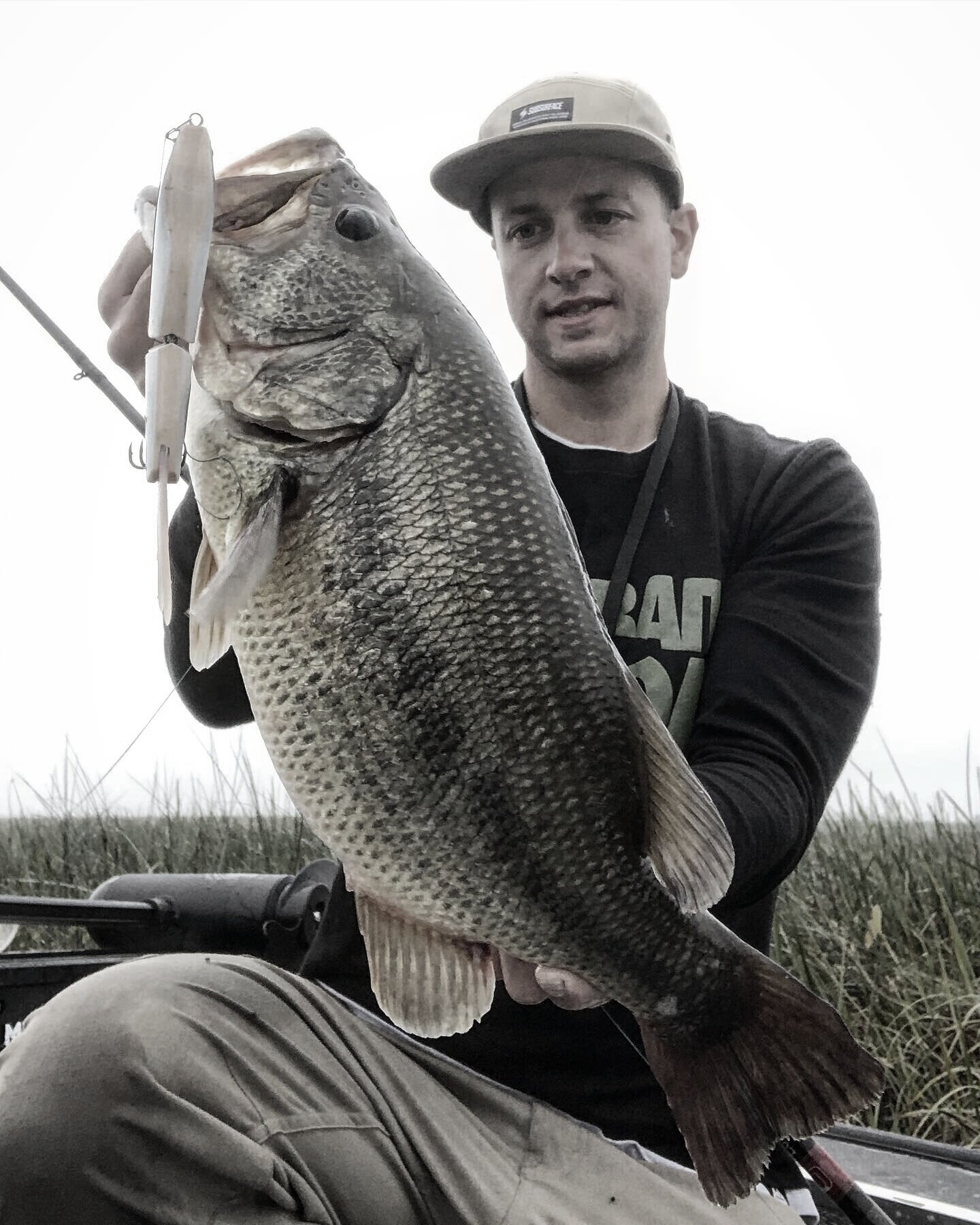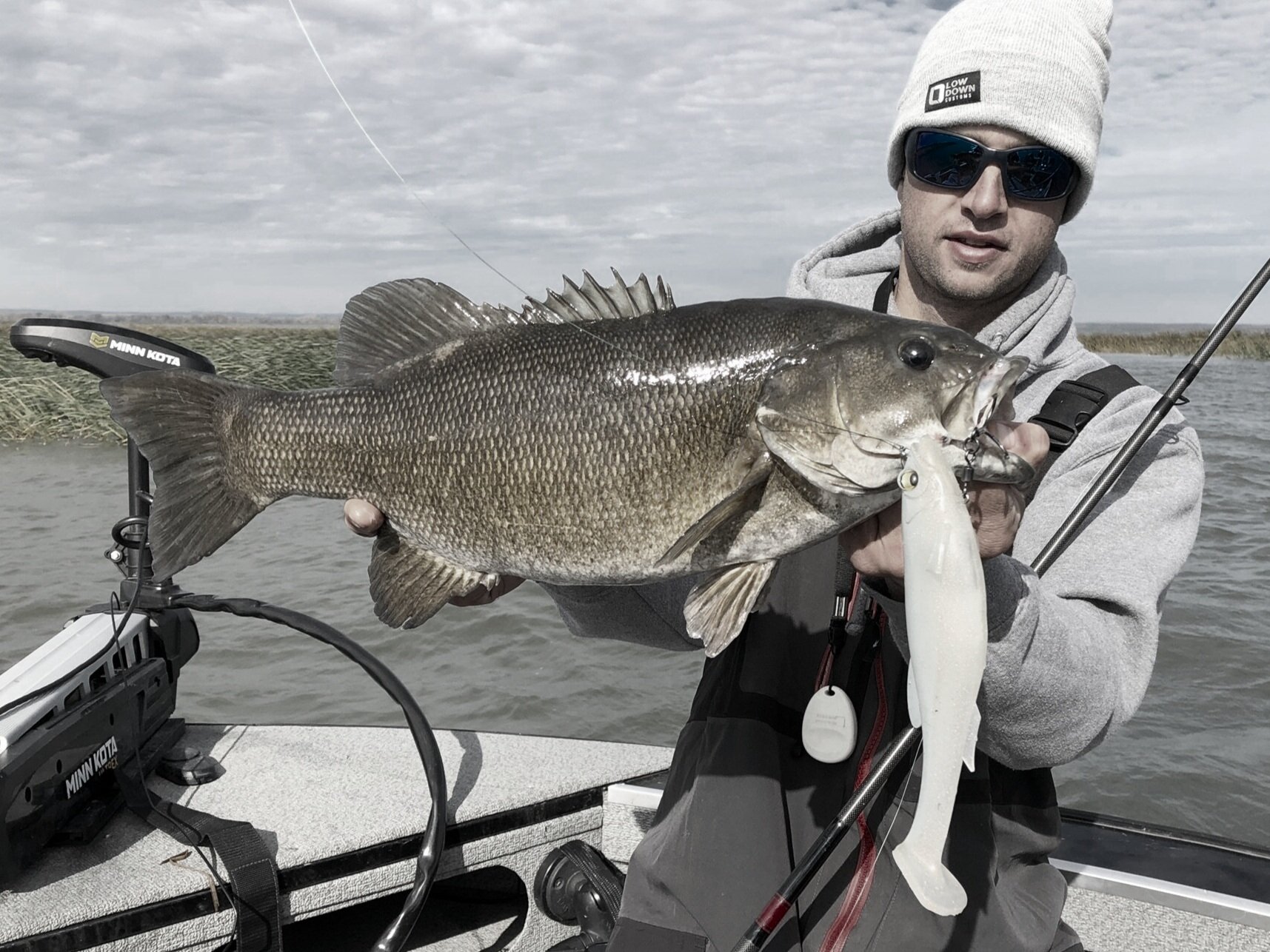Since a few decades, the hype about throwing big swimbaits for many species is constantly growing. Born in the southern states, the movement grew through many states and countries, drawing the attention from multiple different anglers across the world. The idea of throwing an oversized bait to catch a fish of a lifetime is a real dream most anglers wish to accomplish.
In Canada most of our anglers that already throw big baits are doing it for musky or pike. Avid musky anglers probably already catch monster walleyes or a monster bass on musky baits from time to time. They all know what the hype is all about. Casting a bait that could catch you a fish of a lifetime...
As a bass angler the task isn’t nearly as easy, casting a bait that automatically discards smaller bites is hard to keep confidence levels high. With very few bites a day instead of many. Starting with swimbaits can be very rough and you need the right tools to not only throw such large baits, but also to be able to control a fish of record magnitude when an angler becomes fortunate enough to have an encounter. Whether that be a lake record, province/state record, country record or even a world record.
As a multi species angler i have fished all the ways we can imagine in my local waters, from musky fishing to fly fishing and tying my own flies to bass tournaments. Throwing swimbaits and having consistent success with it is one of the most difficult challenges I have had to face. As musky fishing you need to grind big baits, and fly fishing you need to perfectly match the hatch. Adopting a good cadence, balanced rod/reel and lines for each type of swimbait. Success is achieved when all things line up and a fish commits to your bait and the fight is on.
So, where to start:
The internet, Facebook groups, Instagram are full of information. Lots of groups can help in getting started in swimbaits.
The swimbait hype comes from California, the home of swimbaits. Legendary baits and big bass fisherman become famous from here, just thinking about a few famous swimbaits; the Hinkle Trout, Deps 250, 8 inch Huddleston… These baits are designed to target world class largemouth bass, specifcally bass over 10 pounds, and lots of people have accomplished that magic weight using the baits listed above with many in the teens documented on the baits, Mike Gilberts 17.4lb largemouth on the hinkle trout, Butch Brown's mid to high teeners on the Deps 250 and 8” huddleston deluxe.
But as Canadians, before jumping in the hype train and invest a lot in those swimbaits we need to question ourselves. Are we throwing big baits to be a part of the big swimbait community or are we are really doing it to really catch a monster.
2 major differences between our neighbours from the south and us, Canadians.
1) In US we can fish almost all year round. In eastern Canada we can’t fish until the spawn. Generally our season is June to November. A small window including summer time where fish can be more difficult to catch on big baits.
2) The Florida strain largemouth bass, double digit fish. As Canadians we are not blessed with Florida Strain largemouth, thus fishing for smallmouth and northern strain largemouth where 6-7 pounds are monster of a lifetime for most.
So we need to think out of the box. What is considered a big bait in Canada and what does really catch bigger fish for us. How can we, with our different conditions, start up as a hyped, new, big bait thrower to be a successful swimbaiter.
My experience tells me that:
I started fishing for walleye and bass early 2004. We were fishing local spots and catching plenty of both species. A few years after we began to have an interest for musky and start fishing bigger and bigger baits. In the same areas, where we started years ago, we began catching musk's on a regular basis. Why do big baits work for targeting musky? Because 2-3” baits just weren't enough to provoke a strike from the ultimate predator in our waters. The fish don't want expend more energy catching a meal than the meal is worth. While we were musky fishing, every once in a while we would catch very large bass and trophy walleye on these huge baits, more trophy fish than any of us had caught years prior.
Other things to consider, fish will attack for multiple different reasons, defensive behaviour, anger and feeding. What you need to have for consistent success on big baits, is to fish with a profile that the fish are used to seeing in your body of water, match the hatch. Trophy fish don't get big by not eating, that's why on some days the bite will be dead but, you will catch one big fish, that is because a fish needs to constantly eat to maintain its body weight and live. Using this information, the best option of targeting the biggest fish in your body of water is with a slower more methodical bait that a large fish will analyze, and than decide to eat instead of lashing out in anger or defensive behaviour.
Don’t get me wrong, I already catch big bass on 10 inch baits. But different factors are to be considered, as competition in the water body, etc. But in fishing, it’s all about percentage. I really think that considering the factors that I mentioned will put you right in the middle of the window that you want and gives a better percentage to catch big fish on regular basis. Then that gives you the confidence you need to become a successful swimbaiter.
A good rule of thumb is: not too small, but, not too big
For smallmouth in eastern Canada my favourite size baits range from, a large profile 5.5 inch to 8’’. For northern strain largemouth a 6.5 to 9 inch baits are my preferred choices. So almost 35% the length of the fish we target. 19 to 23 inch long. As the year gets longer we increase our size of baits as by late fall/early winter the bait fish still surviving are the largest they will be all year
For the thrill and a challenge, I will throw bigger baits. And sometimes, I will throw smaller baits when the fish are more keyed in on smaller bait fish
As a conclusion, learn from your own experiences, try different things to adapt your area. Another key thing is there is no such thing as a magic bait, all baits have a time and place. My suggestion is to start with a topwater, slow sink softbait, fast sink softbait, a glide bait and a slow sink multi joint hardbait and learn those baits until you can consistently have success with each of them and than expand from there.
J-S. Forcier



